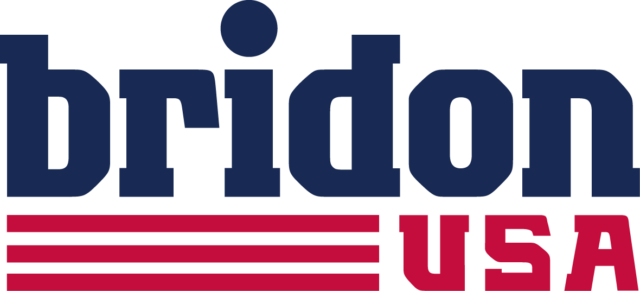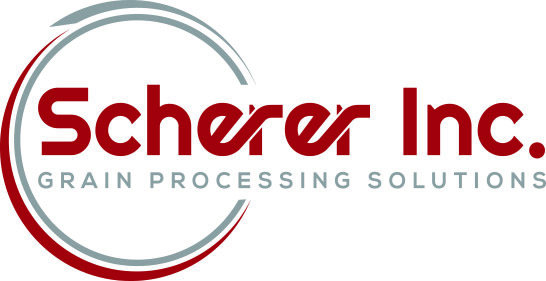In truth, finding a calf that wouldn’t make a good picture is the more difficult task.
Years of careful performance-based selection and attention to genetics have helped Ben and his wife, Brenda, produce an extremely even and marketable set of calves.
Top to bottom, front to toned back, heifer to steer, the calves are remarkably similar.
“Our buyer takes every single calf every year,” Minow says. “There’s no little bunch of cutbacks for me to deal with at shipping.
The carcass records we get back show many of our calves consistently grade choice and prime. Those calves get sent overseas and earn our buyer a good premium.”
Minow’s white, black-nosed, terminal-cross calves are the result of breeding purchased Angus replacement heifers and his Limousin-Angus-Hereford-cross commercial cows to Charolais bulls.
It may sound like a muddied mix to those that stick to one or even two breeds in their pastures, but there are 40 or more years of method to Minow’s madness.
Building from a Hereford base, each breed brought a new benefit to Minow’s herd. Ben’s father, Sam, went back to raising the Hereford cattle that were a staple of the region after a brief switch to sheep during the Great Depression.

In a bid to improve milk production, Sam started breeding his Hereford cows to Angus bulls in the late ’60s.
The black baldy replacement heifers proved to be much thriftier cows with fewer disease problems. And the extra milk started to pay off.
“In the late 1950s and early 1960s, 450 pounds at weaning was a heck of a calf,” Minow says. “We wanted to improve on that and the milking ability the Angus breed brought pushed us well past the 450-pound mark.”
With one success under their belt, the Minows next looked to the Limousin breed to add muscle expression. Originally, the Limousin bulls were used in a terminal cross.
But when black Limousin became available, Minow started keeping three-way cross replacement heifers.
“The Limousin cross gave our cows more muscle, richer milk and hybrid vigor, and the offspring went up another notch,” Minow says.
Muscle can go too far in a breeding operation, though, so the Minows had to be extremely selective when choosing replacements.
Keeping cows that trended toward the expression of Angus traits – smaller frames, lighter muscle and more feminine expression – helped maintain good breeding rates and milking ability. There wasn’t always agreement in the sorting pen, though.
“We would cut back a heifer and Sam would say ‘Boy, she’s a whale of a heifer to be culling,’” Brenda recalls.
“If we gave in and kept one, that’s exactly what she would be. A big fat whale that was last to breed up and didn’t produce any milk. They’d notoriously be open as 3-year-olds.”
Sticking to their guns and selecting for femininity has helped the Minows earn an average 98 percent breedup.

Serendipitous breakdown
When the Coleman family broke down on the way home to Charlo, Montana, from the Rapid City Stock Show with a trailer full of high-dollar Limousin bulls, the Minows offered their corrals while their vehicle was repaired. It wasn’t long before the Colemans had them offering up their herd, too.
They had created a hot bloodline in a bull named First Down. The bull died as a 3-year-old, but his perfect EPDs were still in high demand.
The Colemans asked the Minows if they could use their herd as recipients for First Down embryos. And so began the Minows’ next adventure in breeding.
Committing half of their 600-head herd to the program, the Minows had to turn their March- and April-calving cows quickly to adapt to the new February-to-March calving season. The herd was synchronized and implanted with frozen seven-day-old embryos.
The top genetics of the embryo calves was evident as soon as the calves hit the ground.
“They were the most beautiful calves you’ve ever seen,” Brenda says. “They looked like little bulls from the day they were born.”
Seeing the top-notch genetics firsthand, the Minows invested some of the money earned from the recip program into buying the genetics back for their own herd.
“I’d always been very interested in genetics so the four years we spent doing embryo transfers was interesting and very lucrative at a time when calves were only bringing $300 to $400,” Minow says. “We were able to use that money to put some top genetics into our herd.”
It also helped tighten back up the Minows’ calving window by getting their breeding schedule back on track.

It was seriously derailed when the Minows had to haul their herd to Nebraska during the severe drought of 1988.
The Minows’ comfort level with synchronization and A.I.-ing grew, too. When they ended the embryo program in 1994, he started using A.I. to bring in even more top genetics he couldn’t otherwise afford.
“We went after the few Angus lines that were showing muscle expression and paid close attention to milk and docility,” Minow says.
“When we were feeding our own calves, we found that calm, quiet cattle were not only easier to handle, but performed much better in the feedlot.”
Now that the kids are grown up and moved out, Ben and Brenda have given up A.I.-ing. They’ve also given up calving heifers.
They now purchase 3-year-old Angus replacement heifers and breed to Charolais bulls. Labor wasn’t the only reason for the shift.
“Our cows were getting too big, weighing in at 1,300 to 1,400 pounds due to the hybrid vigor,” Minow says. “A cow should produce 45 to 50 percent of her weight in a calf and a big cow can’t do that.
Plus they were producing carcasses that were too big. Now with 1,200-pound cows we’re producing a 625-pound calf that finishes out at the right size for our buyer. The end product is more desirable and our cattle are more efficient.”
Permanent record
There’s no guessing when it comes time to cull a cow on the Minow Ranch these days. Brenda’s computer has data on each cow stretching back 10 years or more.
While the all-natural and source and age verification program the Minows use requires only a starting and ending date for their calving season, they tag and record the birthday of every single calf in their herd.
Ultrasounding at pregnancy checking keeps the calving window tight. Calving starts March 20 and anything bred to calve after May 1 is culled.

No matter how much head-shaking the neighbors do, the Minows use their portable scale to weigh every single calf at preconditioning, creating another layer of data in their herd’s records.
Additional data on carcass size and quality are obtained from their buyer and cows are mouthed annually to round out the total production picture.
Comparing this wealth of data from year to year enables the Minows to quickly eliminate cows that do not produce 45 percent or more of their bodyweight.
They can precisely pinpoint when a cow is starting to drop off in production, selling her before she brings in a calf that won’t make the cut.
“We have a reputation of selling cows that still have some good years of production left in them,” Minow says. “People will buy them right off the ranch at a premium price. We sell them when they still have value.”
This proactive approach is yet another reason their calves are so remarkably even.
“There are very few second chances in our herd,” Minow says. “Cows either produce consistently and efficiently or they go to town. Now that our genetics are where we want them, detailed records are a great tool to fine-tune the herd.” ![]()
Essential keys to achieving genetic potential
Even the best genetics in the country won’t produce a top calf in the absence of good, quality water, Ben Minow says.
“Just like any other living thing, calves need lots of water for all of their systems to work properly,” he says. “If there isn’t plenty of good water, you definitely see the impact on the calves.”
Starting in 1977, Minow started putting in pipelines to make sure every corner of his ranch had the best water possible. Pipelines now snake 30 miles under Minow’s pastures providing cool, clean water to his calves.
“Our cattle will walk through water to get to the tanks,” Minow says. “They do better on good, cold water and I try to make sure they don’t have to walk more than half a mile to get to it.”
PHOTOS
TOP: Ben Minow is the third generation of Minows to raise cattle near Olive, Montana. A passion for genetics and records has helped him breed, select and cull his way to an enviously even crop of quality crossbred calves.
MIDDLE TOP: Cows at Minow Ranch are expected to produce at least 45 percent of their weight in a calf by fall. Breeding and selecting for smaller-framed, efficient cows that are good milkers has helped Minow meet and surpass this standard.
CENTER: Purchased Angus replacement heifers and Limousin-Angus-Hereford-cross commercial cows are bred to Charolais bulls on the Minow Ranch, producing strategically crossed calves that take the best from all breeds. Come shipping, their long-term buyer doesn’t cut back a single heifer or steer from the carefully crafted bunch.
MIDDLE BOTTOM: Selecting breeds and genetics that are efficient producers helps Ben Minow effectively and conservatively make the best of the resources available on his ranch.
BOTTOM: Minow has installed more than 30 miles of pipeline to make sure every calf is never far from a cool, hydrating drink. Photos courtsey of Martha Mintz






